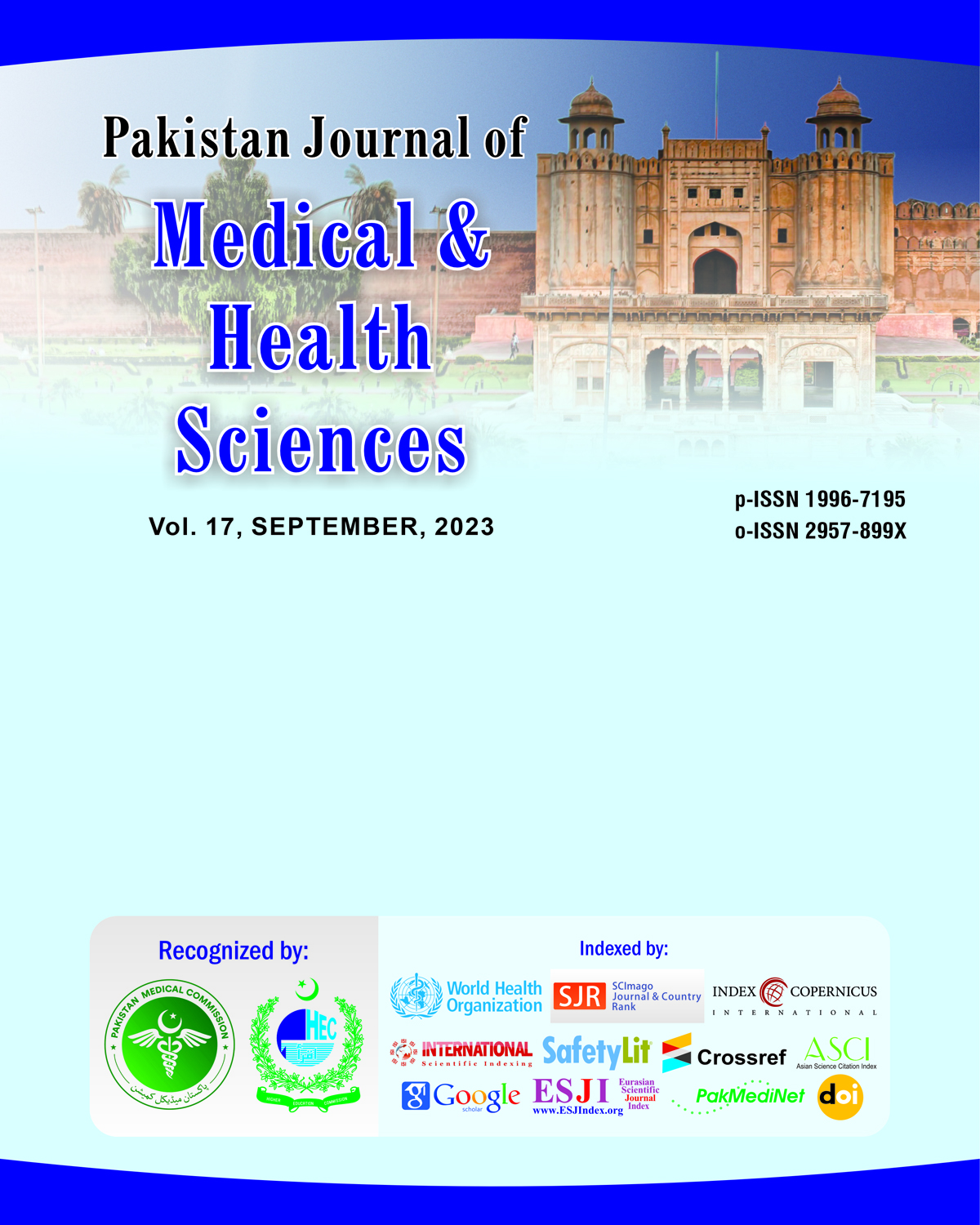Automated Quantitative Assessment of Bone Contusions and Overlying Articular Cartilage Following Anterior Cruciate Ligament Injury
DOI:
https://doi.org/10.53350/pjmhs2023170966Abstract
Introduction: Anterior cruciate ligament (ACL) injuries are one of the most prevalent and debilitating musculoskeletal injuries, particularly among athletes involved in sports requiring pivoting, cutting, or rapid deceleration.
Objective: To assess the feasibility and effectiveness of automated quantitative imaging in quantifying bone contusions and cartilage damage following ACL injuries and to determine how these injuries correlate with knee function and pain outcomes.
Methodology: This retrospective study was conducted at Lady Reading Hospital Peshawar during November 2022 to June 2023. A total of 55 patients (29 males, 26 females) were included in the study. All participants sustained isolated ACL injuries, diagnosed either through clinical examination or confirmed by MRI prior to enrollment. Patients with additional significant knee pathologies such as meniscal tears, ligamentous injuries other than ACL tears, or significant prior knee surgery were excluded. Only individuals who underwent standard diagnostic imaging within 24 hours of injury were considered eligible.
Results: Data were collected from 55 patients, with a mean age of 28.4 ± 6.2 years, with a nearly equal distribution of gender (52.7% males and 47.3% females). The mean BMI was 26.1 ± 3.4 kg/m², and most injuries occurred on the right side (58.2%). The average time from injury to MRI was 12.5 ± 4.1 hours. The majority of injuries resulted from sports (32.7%), followed by accidental falls (27.3%). Associated injuries included meniscal tears (27.3%) and ligamentous injuries (18.2%), with 7.3% of patients having a history of previous knee surgery. The severity of bone contusions in the study cohort varied, with 20 patients (36.4%) having mild bone contusions, 18 patients (32.7%) with moderate contusions, and 11 patients (20%) experiencing severe bone contusions. The average size of mild contusions at baseline was 115 ± 48 mm³, which reduced progressively over time, reaching 75 ± 30 mm³ at 12 months.
Conclusion: It is concluded that bone contusions and articular cartilage damage are common and significant consequences of anterior cruciate ligament (ACL) injuries. Both types of damage contribute to impaired knee function and increased pain levels, which can hinder recovery and increase the risk of long-term complications such as osteoarthritis.
Keywords: Automated Quantitative Imaging, Bone Contusion, Anterior Cruciate Ligament, Pain Outcome, Knee Function
Downloads
How to Cite
Issue
Section
License
Copyright (c) 2023 Aimal Sattar, Tauseef Raza, Aman Ullah Khan Kakar, Muhammad Saqib, Akkad Rafiq, Junaid Javaid, Amina Gul Shehzar Khan

This work is licensed under a Creative Commons Attribution 4.0 International License.


